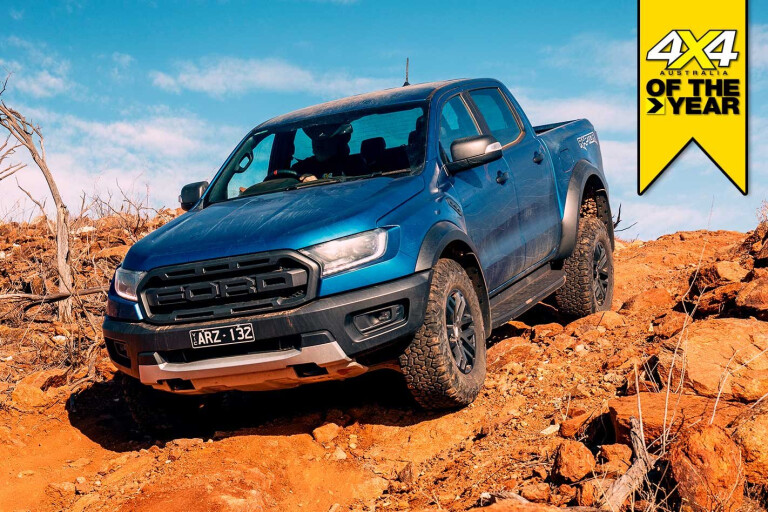
Created by Ford Australia with help from Ford Performance, formerly known as Ford Racing and now the high performance division of the Ford Motor Company globally, the Ranger Raptor is what you might call a ‘factory custom’. That’s because it’s both a standard factory model and a customised model at the same time.
As Ford Performance was involved in the development of the Raptor you may be thinking it has a more powerful engine, but that’s not the case, as the Raptor uses the same 157kW/500Nm 2.0-litre bi-turbo diesel you’ll find in the Ranger XLT and the Everest.
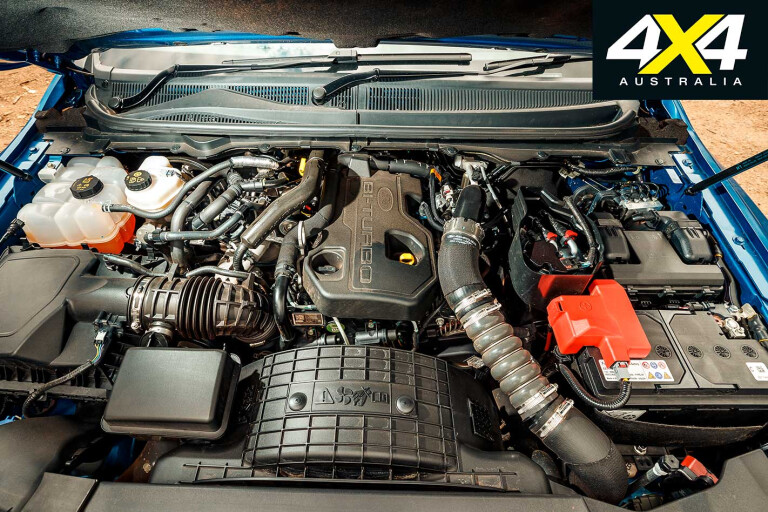
That’s not to say that the Raptor doesn’t offer high performance it’s just that it offers performance of another kind, namely chassis performance.
The Raptor’s chassis has been significantly altered from a standard Ranger, with key changes being 150mm wider front and rear tracks via different front A-arms and a different rear axle housing, 46mm more ground clearance, 30 per cent more suspension travel at both ends, bespoke Fox-brand racing-technology bypass dampers (the rears have ‘piggy-back’ reservoirs), coil springs and Watt’s Link at the rear, four-wheel disc brakes, and 285/70 R17 BFGoodrich All Terrains.
The Raptor is the most expensive of the eight shortlisted vehicles, at $74,990 plus on-road costs.
Touring
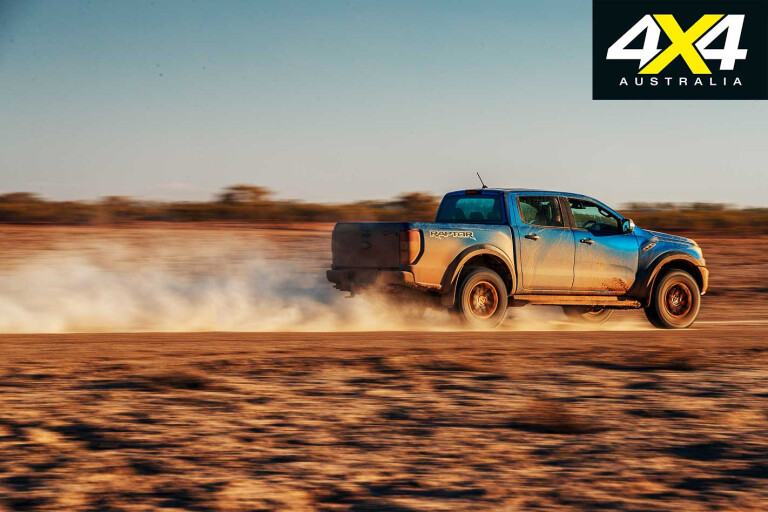
To compensate for the taller gearing from the Raptor’s bigger wheel and tyre package the final drive gearing has been shortened by 11 per cent, which is the only drivetrain difference between a standard 2.0-litre Ranger and the Raptor. Just as well, as the Raptor’s engine also has extra rolling resistance, increased weight and a bigger frontal area to cope; so this sharpening up of the gearing is most welcome.
This shorter gearing still doesn’t bring sprightly highway performance, but the Raptor gets along well enough even if the above mentioned performance impediments are felt with the Raptor’s increased fuel use, the heaviest of the eight shortlisted vehicles on test. All the while the Raptor’s engine is smooth, quiet and refined and the gearbox provides seamless changes.
Much more impressive from a touring perspective is the wonderfully supple and compliant ride and the extraordinary stability at speed on even the poorest roads.
Trail Driving
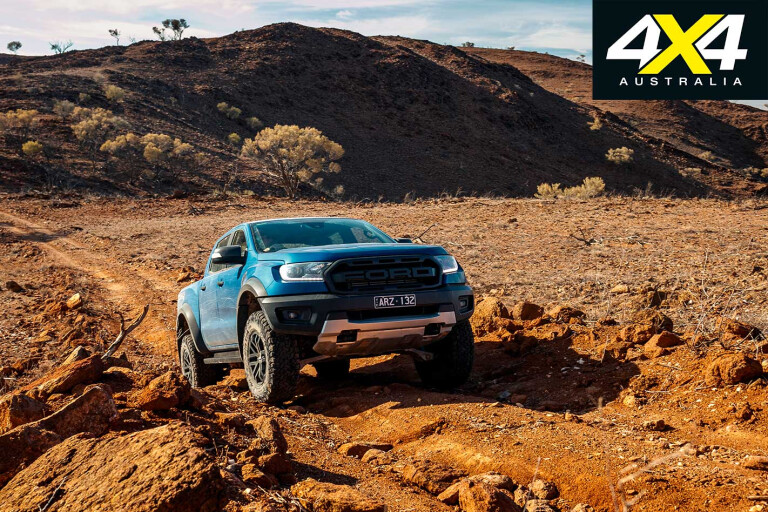
If the Raptor makes for an excellent tourer on poor quality roads, it’s even better on the trails. In the company of the other shortlisted vehicles it’s Raptor first and daylight second on rough tracks, especially in terms of comfort and in the ease that it negotiates the rougher sections of any track. The extra clearance and robust BFGoodrich KO2 light-truck all-terrain tyres also afford a high level of off-road driving confidence.
The Raptor differs from a standard Ranger with its paddle shifters for manual gear selection, as well as its Terrain Management system which has Normal, Sport, Grass/Gravel/Snow, Mud/Sand, Baja and Rock modes.
All modes bar Rock are available in high range while all modes bar Sport and Grass/Gravel/Snow are available in low range, which is a far better arrangement than the Everest’s Terrain Management system.
Set-Piece Hill Climb
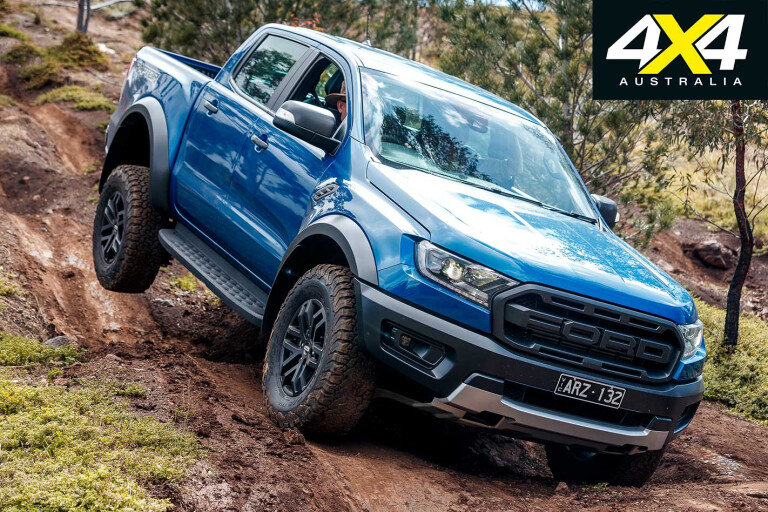
Surprisingly, the Raptor should have been the weapon for our set-piece hill climb, but it wasn’t as good as expected. It got up the hill but needed the driver-switched rear locker to do it comfortably. Why it wasn’t better is hard to say; although, this one particular climb isn’t a universal yardstick and we would still rate the Raptor’s ability to scale a gnarly hill as exceptional for a showroom stock vehicle.
Cabin, Equipment and Safety
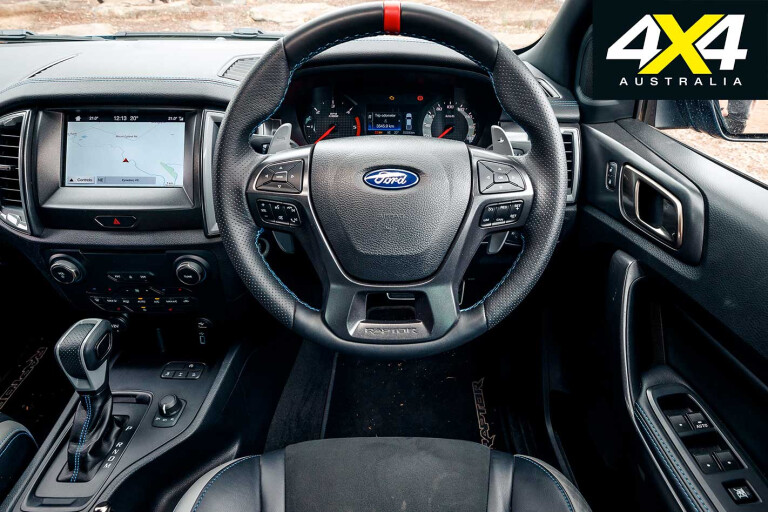
The Raptor offers a long list of standard features including keyless entry and start, six airbags, leather, heated front sports seats, electric seat adjust for the driver, an eight-inch touchscreen, sat-nav, Apple CarPlay, Android Auto, a rear-view camera, auto headlights/wipers, dual-zone climate control, a six-speaker audio system with digital radio, and a 230-volt outlet in the rear of the centre console.
The cabin is nicely finished and the dash layout better than the Ranger, while the driver’s seat is particularly comfortable. As with all Rangers the rear seat offers good leg-room (even behind a tall driver or tall front passenger) and reasonable shoulder and hip-room for three adults.
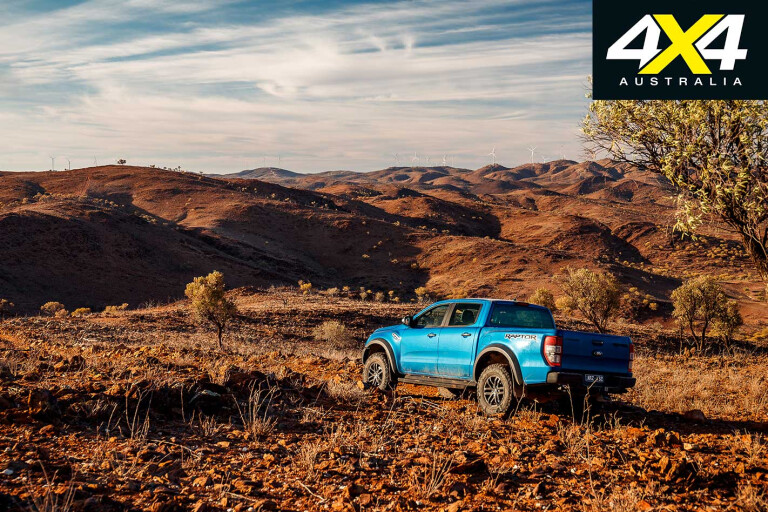
The Raptor doesn’t have the Ranger’s radar cruise control or autonomous braking; although, these features are apparently on the way. The Raptor also doesn’t have an ANCAP test result; although, there’s seemingly no reason why it wouldn’t achieve the five-star rating a standard Ranger gained back in 2015.
Practicalities

Heavy-duty front recovery points and heavy-duty rear recovery points integrated into the standard towbar are all welcome touches. Underneath, the rear of the chassis has also been modified to carry a matching 285/70R17 spare, again a nice touch.
No need to go chasing much in the way of aftermarket enhancement, but if you do want bullbar it would have to be purpose-made for the Raptor. Some may also like a snorkel; although, the claimed wading depth is an impressive 850mm, despite the fact that the engine air intake is under the bonnet lip.
However, the tow rating has been dropped to 2500kg and the payload has been reduced by around 250kg, both a result of the more compliant rear suspension.
Summary
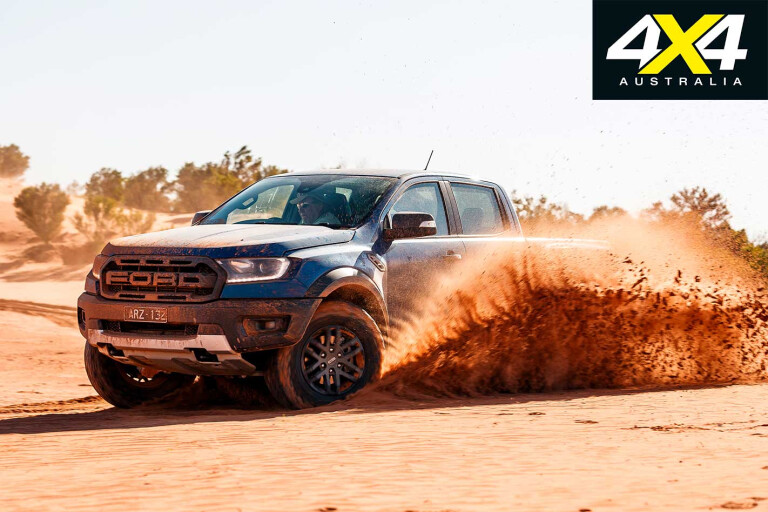
Some people may want a more powerful engine in the Raptor, while others may say the Raptor would be better with a full-time 4x4 system like the Everest’s, but there’s no denying that Ford has built a very impressive recreationally focussed 4x4 ute.
2019 FORD RANGER RAPTOR SPECS:
Engine: 2.0-litre inline-4 bi-turbo diesel
Max power: 157kW at 3750rpm
Max torque: 500Nm at 1750-2000rpm
Transmission: 10-speed automatic
4x4 system: Dual-range part-time
Kerb weight: 2332kg
GVM: 3090kg
Payload: 758kg
Towing capacity: 2500kg
GCM: 5350kg
Tyres: 285/70R17 116/113S
Fuel tank capacity: 80L
ADR fuel consumption claim: 8.2L/100km
On-test fuel consumption: 12.7L/100km
Base price: $74,990 (plus ORC)
As tested: $74,990 (plus ORC)

COMMENTS